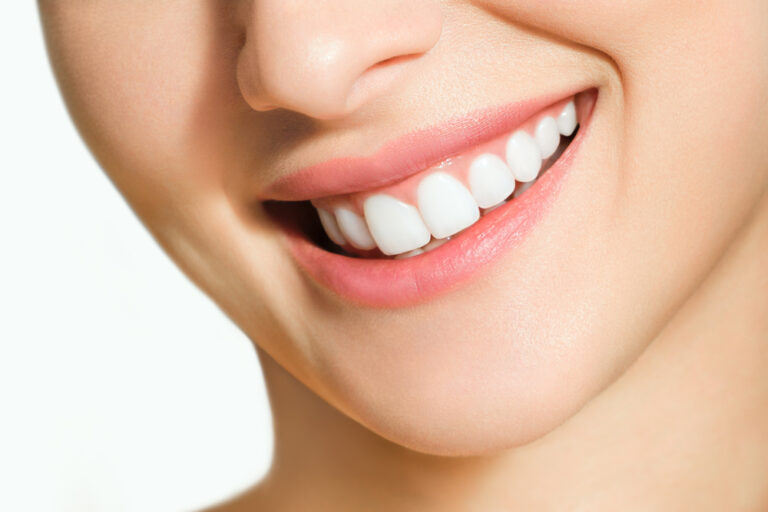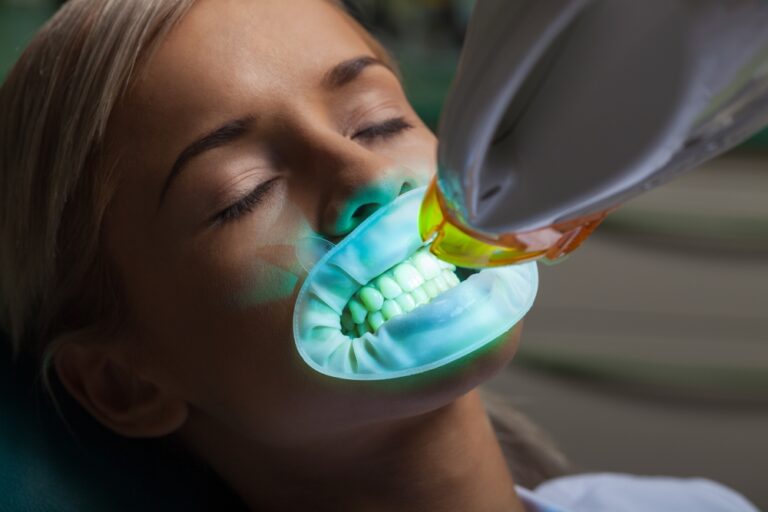Having bright, white teeth is an important part of making a great first impression and boosting self-confidence. But some people find that their teeth tend to stain and discolor more easily than others. If you feel like your teeth pick up stubborn stains from food, drinks, tobacco, or medications, read on to understand the common causes of tooth staining and what you can do prevent and remove unsightly discoloration.
What Factors Lead to Tooth Staining?
Many different factors can contribute to tooth staining and discoloration over time. The more risk factors that are present, the more prone teeth will be to taking on an undesirable yellowish, brownish, or grayish appearance.
1. Thin or Abnormally Developed Enamel
The enamel is the hard, outermost layer of the tooth that serves as the primary barrier against environmental staining. Enamel thickness varies from person to person based on genetics and development.
- Thinner enamel allows more of the inner yellowy dentin layer of the tooth to show through, causing a more yellowed appearance.
- Enamel that forms improperly or inadequately during childhood tooth development is more porous and prone to staining substances permeating into pores and fissures.
- Conditions like enamel hypoplasia or fluorosis create defects in the enamel structure that make teeth more stain absorbent.
2. Rough Tooth Surfaces
Teeth with smooth enamel surfaces tend to stay cleaner and resist stains better than teeth with rougher surfaces:
- Enamel that is naturally bumpy or grooved provides more surface area for pigments to adhere to.
- Acidic foods and drinks can erode and roughen the enamel over time, allowing more stain penetration.
- Cracks, chips, and uneven wear can also make the tooth’s surface more stain receptive.
3. Crowded, Crooked, or Spaced Teeth
Teeth that are crowded, crooked, or widely spaced can be harder to keep plaque-free:
- Crowded teeth can be difficult to brush and floss adequately, leading to more plaque, tartar, and stain buildup between teeth.
- Misaligned teeth may rub up against each other during chewing, resulting in enamel wear and fissures that trap stains.
- Widely spaced teeth can ctrap food debris in gaps around teeth that decays and discolors the enamel.
- Orthodontic appliances like braces or retainers can also promote plaque accumulation around bands, wires, and brackets.
4. Dry Mouth
Saliva helps wash away oral bacteria, food debris, and pigments that can stick to and stain tooth surfaces. Insufficient saliva flow allows more staining accumulation:
- Certain health conditions like diabetes and autoimmune disorders can impair saliva production.
- Hundreds of medications like antihistamines, diuretics, muscle relaxants, pain meds, and antidepressants list dry mouth as a side effect.
- Cancer radiation to the head and neck area can damage salivary glands and diminish saliva output.
- Aging can slow saliva generation. About 30% of older adults suffer from persistent dry mouth.
5. Porous Dental Work
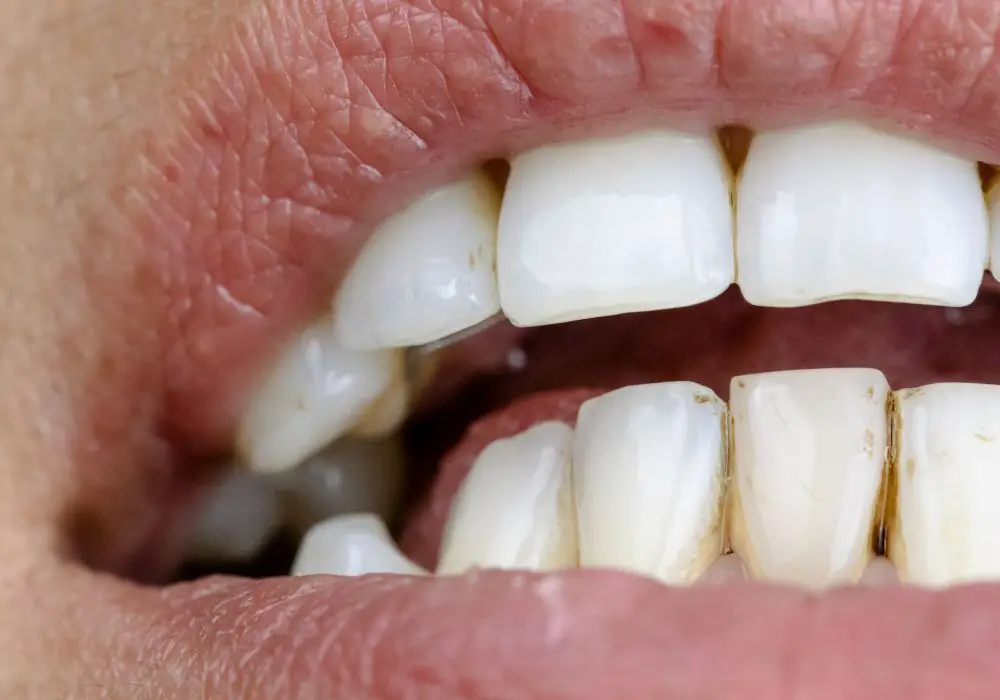
While modern tooth-colored composite fillings, crowns, and porcelain veneers resist staining better than older materials, tiny pores in these materials can still pick up stains over time:
- Porcelain and ceramic dental work can collect stains in microscopic cracks and pits in the material. Good oral hygiene minimizes this.
- Composite resin fillings develop tiny voids between resin particles that absorb pigment. Polishing procedures help remove some surface stain.
- Temporary cement holding in dental work until it is permanently cemented is more porous and prone to staining.
6. Habitual Tobacco Use
Smoking, chewing tobacco, cigars, pipes, and vaping cause significant tooth discoloration in very short periods of time:
- Tar and nicotine in tobacco products easily penetrate pores in tooth enamel. This can lead to black hairy tongue and brown or yellow stain along the gumline.
- The hotter a smoking material burns, the more damaging staining effects it has. Pipes and cigars often cause worse staining than cigarettes.
- E-cigarette vapors leave behind metal particle residues that can create a dark, dingy appearance on teeth.
7. Certain Foods, Drinks and Medicines
Frequent consumption of certain staining consumables can increase discoloration risk:
Foods and Drinks
- Coffee, black tea, cola and dark sodas, red wine, dark berries, tomato sauce, soy sauce, curry spices, beets – these all contain deep coloring pigments that adhere to teeth with regular contact.
- Acidic foods like citrus fruits, juices, and vinegar can erode and roughen enamel over time, making teeth more stain prone.
Medications
- Antibiotics like tetracycline taken while teeth are forming can cause intrinsic gray, yellow, or brown discoloration that is hard to remove.
- Antihistamines, high blood pressure meds, antipsychotics, and others may have side effects of tooth darkening.
- Chemotherapy drugs are often associated with tooth discoloration as a side effect.
8. Age-Related Wear and Tear
Aging takes a toll on teeth and can worsen staining in a few ways:
- Enamel naturally thins, wears down, and frays with use over time. This reveals more of the yellowy inner tooth layers.
- Dentin, the layer under enamel, lays down more dentin tubules with age. This results in a darker, more yellowish colored dentin.
- Root surfaces become exposed as gums recede with age. These root surfaces are more porous and prone to attracting stain.
- Older dental work like composite fillings, porcelain crowns, and dentures may have developed microcracks that collect more stains.
9. Genetic Predisposition
Like most aspects of our appearance, genetics play a role in how stain-prone your teeth are:
- Some people simply inherit thinner, weaker enamel that is more permeable to stains.
- The natural shade of your teeth can make them more susceptible. Yellowish teeth show less contrast with stains.
- Smaller teeth with less surface area may require less staining exposure to exhibit discoloration.
- Higher mineral content in saliva and enamel can help prevent staining for some more than others.
Why Are My Teeth More Stain Prone Than Others?
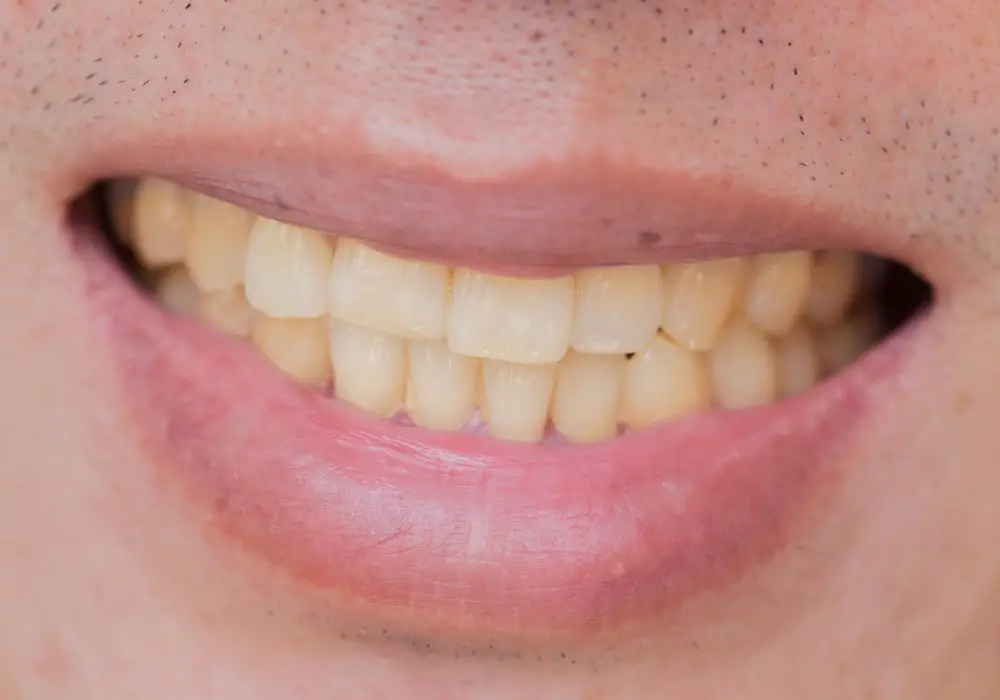
If it seems like your teeth stain noticeably faster than other people’s teeth, there are probably some specific risk factors at play:
- Thinner enamel – Thinner enamel allows stains to show through more quickly. Stains may even penetrate deeper portions of the tooth.
- Rough surfaces – Enamel that is naturally bumpy or becomes etched and worn provides more surface area and vulnerabilities for stains to grab onto.
- Micro-cracks – Tiny cracks in enamel from trauma or grinding your teeth give staining compounds a place to settle and absorb.
- Crowded teeth – Teeth that are crooked or crowded can be harder to brush and floss adequately, leading to more staining.
- Gaps between teeth – Spaces between teeth allow more debris and stains to become trapped and cause discoloration where gaps exist.
- Dry mouth – Insufficient saliva flow means less cleansing of oral bacteria, food debris, and other pigments that can adhere to teeth.
- Porous dental work – Older composite and porcelain fillings, crowns, and veneers may absorb more stains over years of use.
- Smoking and tobacco – Cigarette, cigar, pipe, chewing tobacco, and vape use rapidly accelerates staining and brown discoloration.
- Frequent staining foods/drinks – Habitual coffee, tea, soda, and red wine drinking promotes more pigment sticking to your teeth.
- Poor oral hygiene – Inadequate brushing and flossing allows more plaque and stain-causing bacteria to build up on your teeth.
- Medications – Some medications have tooth staining or enamel defects as known side effects.
- Fluorosis – Overexposure to fluoride affects enamel development, resulting in white spots or streaks on teeth.
- Aging – As you get older, enamel thins and darker inner dentin layers show through more noticeably when stained.
Prevention and Removal Techniques
While tooth staining may be unavoidable for some people, there are preventive measures that can help minimize discoloration:
1. Good Oral Hygiene Habits
- Brush teeth twice daily with a soft-bristled toothbrush – Be sure to brush all surfaces of teeth and along the gumline where stains accumulate most.
- Floss once daily to remove plaque from between teeth where stains like to hide.
- Use an antibacterial mouthwash to reduce staining bacteria in the mouth. Pick a product without alcohol if you have sensitive teeth.
- Get professional cleanings every 6 months to remove hardened plaque (tartar) that regular brushing and flossing can’t tackle.
- Avoid tobacco products like cigarettes, chewing tobacco, cigars, pipes, and e-cigarettes that severely stain teeth with tar and nicotine.
2. Dietary Modifications
- Drink staining beverages like coffee, tea, and red wine with a straw to avoid prolonged contact with teeth.
- Rinse mouth with plain water after consuming staining foods and drinks to help wash away pigments and prevent sticking.
- Limit acidic drinks and foods like soda, citrus juice, and vinegar that erode and roughen enamel over time.
3. Dental Products
- Use teeth whitening toothpaste containing mild abrasives like silica and calcium carbonate to polish away some surface stains.
- Try teeth whitening strips or custom trays with peroxide-based gels to actively lift stains off teeth up to 8 shades lighter.
- Apply remineralizing fluoride treatments to help strengthen enamel and make it more resistant to new stains.
4. Professional Teeth Whitening
For more dramatic teeth whitening, consider professional options like:
- In-office bleaching uses higher concentrations of hydrogen peroxide gels applied in-office to whiten teeth up to 10 shades in one visit.
- Take-home whitening trays are custom-fitted trays filled with peroxide gel to safely whiten teeth at home over 1-2 weeks. More gradual results of 2-6 shades lighter.
- Teeth polishing by a dental hygienist removes superficial stains and smooths enamel to help teeth resist new stains better.
- Micro-abrasion removes tiny amounts of enamel to get rid of deeper stains affecting the outermost enamel layer.
5. Advanced Stain Solutions
For stubborn intrinsic stains affecting inner layers of the teeth, options like dental veneers, crowns, or bonding can mask the discoloration by covering the front surface of teeth with tooth-colored materials. But these options do involve removal of some natural tooth structure and have higher costs.
Answers to Common Teeth Whitening Questions
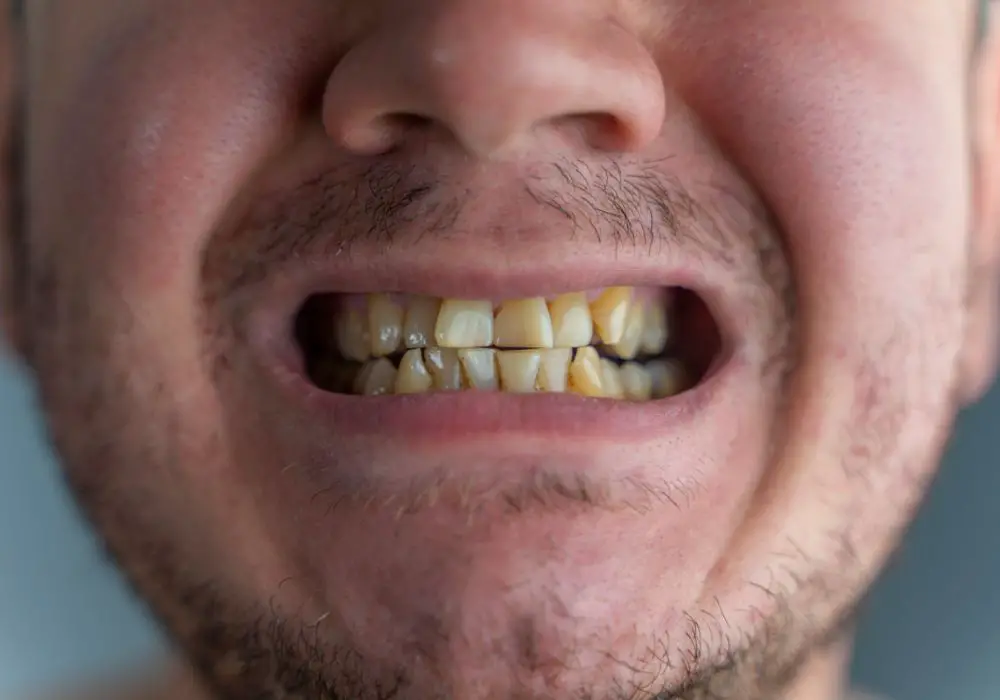
What foods and drinks stain teeth the most?
The most common tooth staining culprits are coffee, black tea, red wine, dark sodas, dark berries, tomato sauce, soy sauce, curry spices, and tobacco. In general, dark pigmented foods and drinks will stain teeth more than lighter colored ones. The longer these liquids are in contact with teeth, the darker the stains.
Does whitening toothpaste actually work to whiten teeth?
Over-the-counter whitening toothpastes can help remove some surface stains with mild abrasives like baking soda or hydrated silica. They may also contain low concentrations of hydrogen peroxide to chemically lift some stains. However, dramatic whitening is not likely with regular use of these products alone. Their main stain removal comes from physical abrasive polishing, not bleaching.
Is it safe to whiten teeth while pregnant?
It’s generally not recommended to undergo teeth whitening treatments during pregnancy, especially those with higher concentrations of hydrogen peroxide. There is limited research on the safety of peroxide whitening while pregnant. Check with your dentist, but they will likely recommend delaying whitening procedures until after you have given birth.
How long do teeth whitening treatments last?
In-office professional whitening results can last 1-3 years. Over-the-counter whitening gels and strips may last 6 months to 1 year. Avoiding dark staining foods and drinks helps lengthen the results. Periodic touch up treatments and maintaining good oral hygiene are needed to keep your teeth looking brighter long-term.
Can stained teeth be fixed or covered up with dental work?
For deep intrinsic stains affecting inner tooth layers, options like dental veneers, crowns, or bonding can mask the discoloration by covering the front surface of teeth with tooth-colored materials. But these options do involve removal of some natural tooth structure. Only consider them after trying simpler whitening treatments first.
How long does it take for teeth to stain again after whitening?
It may only take 1-2 weeks for some degree of restaining to occur after intensive teeth whitening treatments. More noticeable darkening tends to happen within 1-3 months post-whitening. Avoiding heavily pigmented food and drinks helps prolong your brighter smile. Be prepared for some maintenance sessions to keep teeth whiter long-term.
Are there any negative effects of teeth whitening?
When used correctly, hydrogen peroxide whitening treatments are considered quite safe. Potential side effects include temporary tooth sensitivity and gum irritation. Misuse with extremely high peroxide levels can damage enamel and roots. Any whitening method that requires removing a lot of natural tooth structure should be avoided. Always follow product directions carefully.
In Summary
While no one is immune from tooth staining and discoloration entirely, being aware of the causative factors allows you to minimize staining potential. Try to limit staining foods and drinks, maintain diligent oral hygiene practices, and touch up your teeth whitening routinely. But don’t expect permanently stain-free teeth without periodic effort. Consult your dentist to determine which prevention and whitening options suit your specific needs and lifestyle best. With the right guidance, you can keep your smile looking brightly colored and minimize how easily those unsightly stains occur in the first place.
Here is a brief recap of the key points:
- Enamel thickness, rough surfaces, enamel defects, crowded teeth, and aging can make teeth more prone to stains.
- Habitual coffee, tea, red wine, soda, tobacco and other substances can promote discoloration.
- Good brushing, flossing, dental cleanings, and stain avoiding habits help prevent stains.
- Over-the-counter and professional whitening treatments can lighten existing stains from 2-10 shades.
- Crowns, veneers or bonding are options for masking deep intrinsic stains.
- Genetics and some health conditions also play a role in stain susceptibility.
Keeping your teeth looking their brightest requires diligence, but a dazzling white smile is attainable with the right prevention and whitening regimen tailored to your needs.




